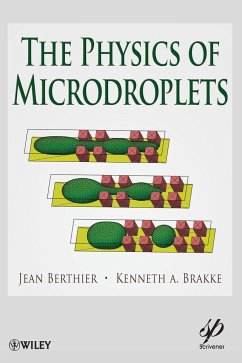The Physics of Microdroplets gives the reader the theoretical and numerical tools to understand, explain, calculate, and predict the often nonintuitive observed behavior of droplets in microsystems.
Microdrops and interfaces are now a common feature in most fluidic microsystems, from biology, to biotechnology, materials science, 3D-microelectronics, optofluidics, and mechatronics. On the other hand, the behavior of droplets and interfaces in today's microsystems is complicated and involves complex 3D geometrical considerations. From a numerical standpoint, the treatment of interfaces separating different immiscible phases is difficult.
After a chapter dedicated to the general theory of wetting, this practical book successively details:
The theory of 3D liquid interfaces
The formulas for volume and surface of sessile and pancake droplets
The behavior of sessile droplets
The behavior of droplets between tapered plates and in wedges
The behavior of droplets in microchannels
The effect of capillarity with the analysis of capillary rise
The onset of spontaneous capillary flow in open microfluidic systems
The interaction between droplets, like engulfment
The theory and application of electrowetting
The state of the art for the approach of 3D-microelectronics using capillary alignment
Microdrops and interfaces are now a common feature in most fluidic microsystems, from biology, to biotechnology, materials science, 3D-microelectronics, optofluidics, and mechatronics. On the other hand, the behavior of droplets and interfaces in today's microsystems is complicated and involves complex 3D geometrical considerations. From a numerical standpoint, the treatment of interfaces separating different immiscible phases is difficult.
After a chapter dedicated to the general theory of wetting, this practical book successively details:
The theory of 3D liquid interfaces
The formulas for volume and surface of sessile and pancake droplets
The behavior of sessile droplets
The behavior of droplets between tapered plates and in wedges
The behavior of droplets in microchannels
The effect of capillarity with the analysis of capillary rise
The onset of spontaneous capillary flow in open microfluidic systems
The interaction between droplets, like engulfment
The theory and application of electrowetting
The state of the art for the approach of 3D-microelectronics using capillary alignment








